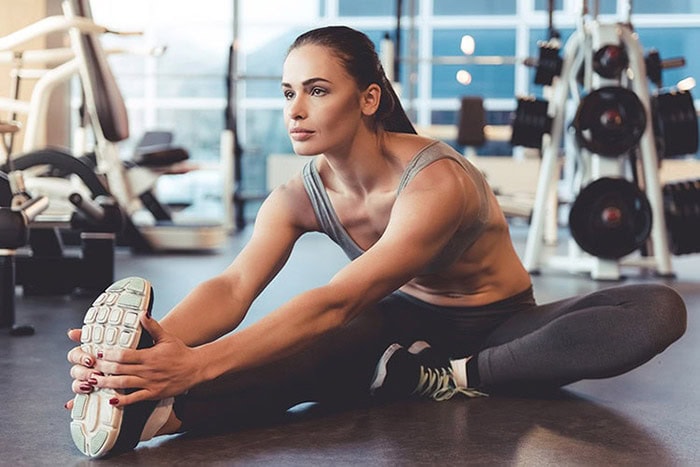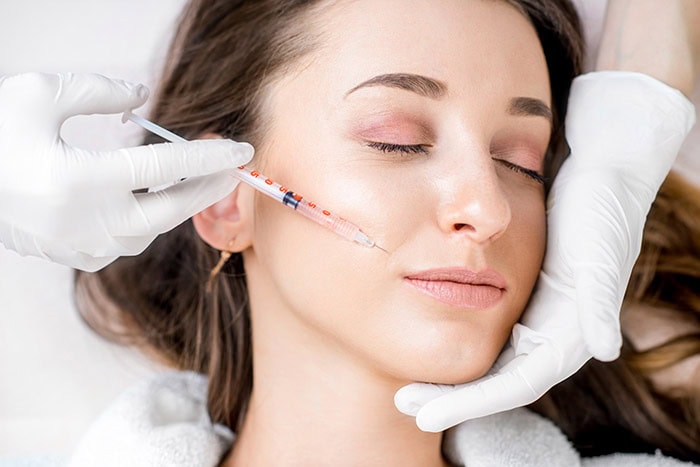Exercise after Botox and aftercare explained
Botox is a quick treatment with minimal downtime, but what you do afterwards can affect how well it works. Exercise is one of the most common concerns, and many patients ask when it’s safe to return to the gym or their favourite fitness routine.
The key thing to remember is that strenuous activity raises blood flow and pressure, which can increase bruising and even cause Botox to spread from where it was carefully placed. A short break from workouts makes a big difference in protecting your results.
At my aesthetic clinic in Wimbledon, serving patients in Raynes Park, Kingston, Surbiton, Richmond, and across South West London, I often explain why exercise matters after Botox and how waiting just a short time helps ensure your results look natural and last longer.
Can I Exercise After Botox?
Yes — but not straight away. You should avoid strenuous exercise for at least 24 hours after Botox (and follow basic Botox aftercare advice such as staying upright and not rubbing the area), and in some cases, it’s better to wait up to 48 hours before returning to high-intensity workouts like running, weight training, or spin classes.
This is because exercise increases blood flow, body temperature, and muscle movement in the treated areas, which may cause:
- Botox to migrate away from the target muscles before it has fully settled
- More bruising or swelling at the injection points
- A higher risk of infection from touching shared equipment or excess sweating
- Less predictable results, especially in delicate areas such as around the eyes
Light activities such as gentle walking or stretching are fine, but intense workouts are best saved for later. Waiting just a short time helps protect your results and reduces the risk of side effects.
Yes, after a workout it’s natural to want a hot shower, but in the first 24 hours you’ll need to be a little more careful. I cover this in more detail in my guide on whether you can shower after Botox.
If you’re also unsure about heat or alcohol, you may find my guides on saunas after Botox and drinking alcohol after Botox helpful.
What Happens If I Exercise After Botox?
If you exercise too soon, you might notice increased redness, swelling, or bruising in the treated areas. Sweat and friction can also irritate the skin, making it more uncomfortable.
In rare cases, exercising too early may allow the Botox to spread to nearby muscles, which can lead to uneven or less natural-looking results. While it won’t usually “ruin” your treatment completely, it can make the Botox less effective or shorten how long it lasts.
Most patients agree it’s worth waiting just a day or two to get the smoothest, most predictable outcome — especially when you’ve invested in looking refreshed and natural.

Gentle stretching is safe after Botox — just avoid intense workouts for the first 24 hours.
Does Botox Wear Off Faster If You Exercise a Lot?
This is a common myth. Regular exercise does not make Botox suddenly disappear, but some very active people do notice that their results fade a little sooner than expected.
The reason isn’t that exercise “undoes” Botox, but that higher metabolism and circulation in people who train intensively may break down the product slightly more quickly. High levels of activity can also mean the treated muscles are used more often, which may influence how long the effects last.
For most patients, Botox results lasts around 3–4 months, regardless of their exercise routine. However, if you train at a high level and feel your results don’t last as long, treatment timing can be adjusted to suit your lifestyle. At my aesthetic clinic in Wimbledon, I work with patients from Raynes Park, Kingston, Surbiton, and across South West London to find the right schedule, so you can stay active while still enjoying smooth, natural Botox results.
What Is the 4-Hour Rule After Botox?
The 4-hour rule is one of the most important aftercare guidelines to follow once you leave the clinic. For a full overview, I’ve written a separate article on Botox aftercare. For the first 4 hours after treatment, you should:
- Stay upright – avoid lying down, bending forward for long periods, or putting your head below your heart.
- Avoid touching or rubbing the treated area – this prevents Botox from spreading to unintended muscles.
- Skip activities that put pressure on the face – for example, wearing tight hats, goggles, or leaning on your hands.
The first few hours after treatment are really about being sensible – light movement is fine, but avoid intense exercise and don’t lie flat straight away. I explain more about this in my guide on how long after Botox you can lay down.
Can I Go for a Walk After Botox?
Yes — a gentle walk is absolutely fine, even on the same day as your treatment. Walking doesn’t raise your heart rate significantly or increase blood flow enough to interfere with the way Botox settles.
In fact, many patients find that light walking or gentle stretching helps them relax after treatment while staying active. Just avoid brisk power-walking, jogging, or anything that leaves you overheated or sweaty in the first 24 hours.
A calm stroll outdoors is one of the best ways to keep moving while protecting your results.

A gentle walk after Botox is perfectly safe and can be enjoyed the same day as treatment.
What Kind of Exercise Should I Avoid After Botox?
For the first 24–48 hours, it’s best to avoid activities that significantly raise your heart rate, body temperature, or put pressure on the treated areas. These can all increase circulation, swelling, or risk the Botox moving from where it was carefully placed. Exercises to skip include:
- High-intensity workouts – such as running, HIIT, or spin classes, which cause a rapid increase in blood flow and sweating.
- Weightlifting – particularly heavy lifts that strain the face, neck, or forehead muscles, as this can place pressure on the treatment area.
- Hot yoga or inverted poses – these increase circulation to the head and involve prolonged bending forward, which may affect how Botox settles.
- Swimming – not only because of the strain from goggles pressing on the face, but also due to chlorine and bacteria in pool water irritating the injection sites.
- Saunas and steam rooms – heat dilates blood vessels, raising the risk of bruising, swelling, and discomfort. If you use tanning beds it’s worth checking my article on sunbeds after Botox and when they’re safe.
After this short rest period, you can gradually return to your normal fitness routine, starting with lighter forms of exercise before moving on to more strenuous activity.
Hot yoga, steam rooms and saunas all combine heat with raised heart rate, so they need a bit of extra caution in the early days – I explain this in my guide on saunas after Botox and when they’re safe again.
Just like workouts, travel plans sometimes need a little adjustment around your appointment – if you’ve got a flight booked, my guide on whether you can fly after Botox explains what to consider.
Should I Do Facial Exercises After Botox?
No — Botox treatment doesn’t work the same way as dermal fillers, which sometimes need gentle moulding after treatment. Botox is carefully injected into specific muscles and does not need to be “moved around” to take effect.
Facial exercises or exaggerated expressions will not improve your results and may even increase swelling or discomfort if done too soon. Instead, let your Botox results develop naturally over the next 7–14 days as the Botox takes full effect.
The best thing you can do is follow aftercare advice, be patient, and allow the treatment to work gradually — giving you a smooth, refreshed, and natural look without any extra effort.
Can Botox Migrate After 48 Hours?
It’s highly unlikely. Botox begins binding to the target muscles almost immediately after injection, and within the first 24–48 hours it is securely in place. After this point, normal activities — including exercise, facial expressions, or sleeping — will not cause it to move.
This is why the first day or two after treatment is the most important time to follow aftercare advice closely, such as avoiding strenuous workouts, lying flat, or rubbing the treated areas. Once that initial window has passed, you can feel confident that your Botox will stay exactly where it was intended.

When Botox is placed correctly, it binds to the target muscles within 24–48 hours and won’t migrate afterwards.
Additional Questions People Ask
Can I Lift Weights After Botox?
It’s best to avoid weightlifting for 24–48 hours after Botox. Heavy lifting raises blood pressure and circulation, which may increase bruising and swelling around the injection sites. It can also place strain on the face and neck muscles, which isn’t ideal while the Botox is settling. After this short recovery period, you can safely return to your normal training routine without affecting your results.
Is Sweating Bad After Botox?
Excessive sweating in the first 24 hours can irritate the injection sites and, if combined with touching your face or wiping sweat away, may slightly increase the risk of infection. Sweating itself doesn’t damage Botox, but it’s best to keep the treated area clean and cool during this time. After the first day, sweating — whether from exercise, hot weather, or daily activity — is no longer a concern, and you can return to your normal lifestyle.
Can I Go Running After Botox?
Running should be avoided for at least the first 24 hours. High-intensity sprints or long-distance runs raise your heart rate and circulation, which can cause Botox to migrate or increase the risk of bruising. After 1–2 days, a light jog is usually fine for most patients. If you’re training for an event or run regularly, it’s best to schedule Botox on a rest day to avoid interrupting your fitness routine.
If you’re planning a full gym routine, you may also want to read my guide on how soon after Botox you can safely use saunas and steam rooms.

Running should be avoided for the first 24 hours after Botox — after that, light jogging is usually fine.
Final Thoughts on Botox and Exercises
You don’t have to give up exercise for long after Botox, but patience pays off. By waiting just 24–48 hours before hitting the gym, you’ll reduce the risk of bruising, swelling, or uneven results — and help your Botox last as long as possible.
📍 If you’re considering Botox in Wimbledon, Raynes Park aesthetic clinic, Kingston, Surbiton, Putney, or anywhere in South West London, I’d be happy to guide you through safe aftercare and treatment plans tailored to your lifestyle.
During your free consultation, we’ll discuss your skin concerns, assess your facial structure, and decide together which treatment aligns best with your needs.
Book your free consultation here →
Or call me directly: 07702 389 636
Warm regards,
Dr Suresh Mohan
Contact Dr Suresh Mohan
Considering Book FREE consultation! My clinic is dedicated to providing this advanced skin rejuvenation technique, ensuring top-notch care in the heart of London.
If you have a specific question, want to book a free consultation or request a call back, please fill in the form below, and I will get back to you as soon as possible.
By clicking ‘Send enquiry‘ you agree to Dr Mohan Clinic’s Privacy Notice.







